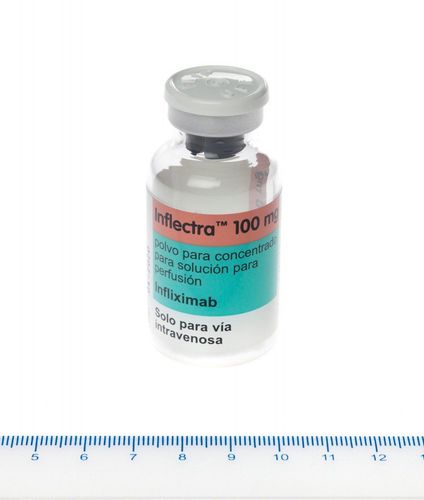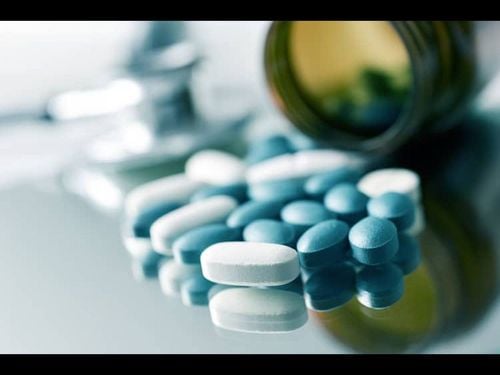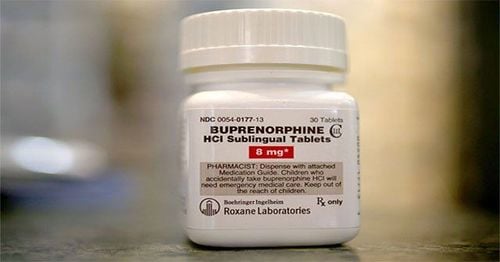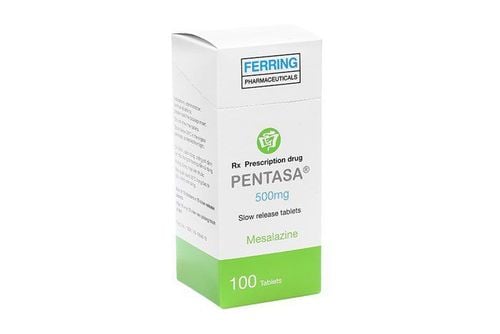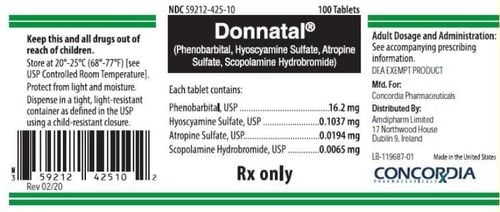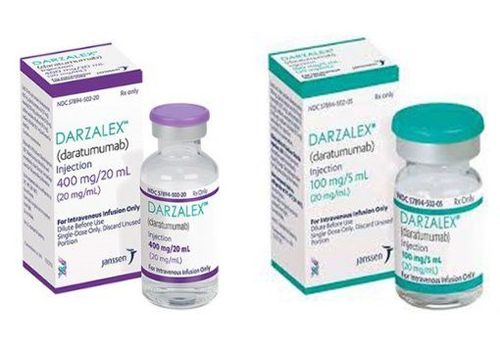This is an automatically translated article.
Methylpred 4mg is the preferred drug group indicated for the treatment of conditions such as osteoarthritis, blood abnormalities, some dangerous allergic reactions and cancer. So what is Methylpred 4mg? How much should Methylpred 4mg be taken?
1. What are the uses of Methylpred 4mg?
1.1. What is Methylpred 4mg? Methylprednisolone 4 is a product of Khanh Hoa Pharmaceutical, with the ingredient being methylprednisolone. This is a drug used in the treatment of diseases such as: rheumatoid arthritis, systemic lupus erythematosus, some forms of vasculitis; temporal arteritis, nodular periarteritis, sarcoidosis, bronchial asthma, chronic ulcerative colitis,...; acute leukemia, lymphoma, breast cancer, prostate cancer; primary nephrotic syndrome. The drug has the main ingredient Methylprednisolone 4mg and is made in the form of tablets.
1.2. What are the uses of Methylpred 4mg? Methylprednisolone is an active ingredient in the group of anti-inflammatory corticosteroids, the synthetic glucocorticoid subgroup. Methylprednisolone is a potent anti-inflammatory, anti-allergic agent and has the ability to deeply suppress the immune system. Methylpred 4mg is used to treat inflammatory forms such as arthritis, rheumatism, allergies, bronchial asthma ...
Methylpred 4mg is indicated in the following cases:
Endocrine disorders: Adrenal insufficiency Primary and Secondary: Methylprednisolone can be used but must be combined with a mineralocorticoid such as hydrocortisone or cortisone. Congenital adrenal hyperplasia; Non-fouling thyroiditis; Hypercalcemia in cancer. Rheumatoid (joint) diseases: Such as rheumatoid arthritis , including rheumatoid arthritis in children; Ankylosing spondylitis; Acute and subacute bursitis; Inflammation of the synovial membrane of the joints; Nonspecific bursitis tendinitis; Post-traumatic osteoarthritis; Psoriatic arthritis; Supracondylar conjunctivitis Allergic diseases: Seasonal and year-round allergic rhinitis; Hypersensitivity to the drug; Serum disease; Contact dermatitis; Asthma; Allergic dermatitis. Eye disease: Allergic conjunctivitis; Ocular neuritis; Keratitis; Corneal infection due to Herpes Zoster, Iritis of the eyelids. Respiratory tract diseases : Aspiration pneumonia; Sacoidosis; beryllium poisoning; Loeffler syndrome. Blood diseases: Hemolytic anemia; Idiopathic thrombocytopenic purpura in children; Secondary thrombocytopenia in children; Decrease in erythrocytes; Congenital hypoplastic anemia. Tumor disease: Leukemia and lymphoma in children. Edema: Causes diuresis or decreased proteinuria in nephrotic syndrome. Gastrointestinal diseases: Crohn's disease. Nervous system: Exacerbation of multiple sclerosis. Skin diseases: Pemphigot; Blisteric dermatitis herpetiformis; Erythema multiforme; Seborrheic dermatitis; Psoriasis; Exfoliative dermatitis. Collagen disease: systemic lupus erythematosus; Systemic polymyositis; Low heart rate. Other indications: Tuberculous meningitis; Toxocariasis involves the heart muscle and nerves.
2. Usage of Methylpred 4mg blood pressure medicine
2.1. How to take Methylpred 4mg Methylprednisolone 4 orally. Swallow the tablet whole with an adequate amount of water. Do not chew or crush the tablet as it may reduce its bioavailability.
The right time to use it for the best effect is around 8 am, after eating.
2.2. Dosage of Methylpred 4mg Determine the individual dosage.
The starting dose is: 6 - 40 mg of methylprednisolone per day. The dose required to maintain the desired therapeutic effect is lower than the dose required to achieve an initial effect, and the lowest dose that can achieve the desired effect should be determined by gradually reducing the dose until the desired effects are observed. signs or symptoms of illness increase.
When large doses are needed over a long period of time, alternate day dosing after disease progression has been controlled, there is less ADR because there is a recovery time between each dose. In alternate-day therapy, a single dose of methylprednisolone is administered every 2 days, in the morning, according to the natural time of glucocorticoid secretion.
Treatment of severe asthma attacks for inpatients: First, intravenous methylprednisolone 60 - 120 mg/time, once every 6 hours, after acute asthma has recovered, use a daily oral dose of 32 - 48 mg . The dose is then tapered and may be discontinued within 10 days to 2 weeks of initiating corticosteroid therapy.
Acute asthma attack: Methylprednisolone 32 to 48mg daily for 5 days, after which you can have additional treatment at a lower dose for a week. When recovering from an acute attack, methylprednisolone is rapidly reduced.
Severe rheumatic diseases: Initially, methylprednisolone 0.8mg/kg/day is usually given in divided doses, followed by consolidation therapy using a single daily dose, followed by tapering to the minimum effective dose. .
Rheumatoid Arthritis: The starting dose is 4 to 6mg of methylprednisolone per day. During acute episodes, use higher doses: 16 to 32 mg/day, then tapered rapidly. Chronic arthritis in children with life-threatening complications: Sometimes methylprednisolone is used in induction therapy, at a dose of 10 to 30 mg/kg/course (usually 3 times).
Chronic ulcerative colitis: Mild disease: Enema (80mg); Feature exacerbations: Oral (8 to 24mg/day).
Primary nephrotic syndrome: Initially, use daily doses of methylprednisolone 0.8 to 1.6 mg/kg for 6 weeks, then tapered over 6 to 8 weeks.
Immune hemolytic anemia: Take methylprednisolone 64mg daily for 3 days. Must be treated with methylprednisolone for at least 6-8 weeks.
Sarcoid disease: Methylprednisolone 0.8mg/kg/day, for remission. Use low maintenance dose, 8mg/day.
There are no special requirements for drug handling after use.
Note: The above dosage is for reference only. The specific dose depends on the condition and the progression of the disease. To get the right dose, you need to consult your doctor or healthcare professional.
Handling missed dose: Add dose as soon as you remember. However, if the interval between the next dose is too short, skip the missed dose and resume the dosing schedule. Do not take a double dose to make up for a missed dose.
Treatment of overdose: Symptoms of overdose with long-term glucocorticoid use, including: Cushing's syndrome, muscle weakness, osteoporosis, hyperadrenocorticism and adrenal suppression may occur.
In these cases, consideration should be given to making the right decision to discontinue or completely stop taking glucocorticoids.
3. Contraindications of Methylpred 4mg
Absolutely do not use Methylpred - Nic 4 for:
People who are allergic or sensitive to Methylprednisolone or any of its ingredients. People taking a live virus vaccine. Patients with severe infections, except septic shock and tuberculous meningitis. Subjects with skin lesions caused by viruses, fungi or tuberculosis.
4. Notes when taking Methylpred 4mg
4.1. Use with caution in patients with osteoporosis, new vascular shunts, mental disorders, peptic ulcers, duodenal ulcers, diabetes, hypertension, heart failure and growing children .
Because of the risk of undesirable effects, systemic corticosteroids must be used with caution in the elderly, at the lowest possible dose and for the shortest possible duration.
Acute adrenal insufficiency can occur when the drug is stopped suddenly after long treatment or when there is stress.
When used in high doses, may affect the effectiveness of vaccination.
Children may be more sensitive to adrenal suppression during topical treatment.
4.2. Pregnancy and breast-feeding Pregnancy: Prolonged use of methylprednisolone to the mother may result in a slight decrease in the birth weight of the neonate. Therefore, the use of methylprednisolone in pregnancy requires weighing the potential benefits against the possible risks to mother and child.
Lactation period Can be used by nursing mothers.
5. Possible side effects of Methylpred 4mg
There may be side effects while taking the drug. By frequency, they include:
Central nervous system: Insomnia, excitability. Digestion: Increased appetite, indigestion, stomach ulcers. Diabetic Hirsutism. On neuromuscular and skeletal: Arthralgia. Cataracts, glaucoma. Epistaxis. When fully understanding the possible side effects of Methylpred 4mg, patients should be very careful and should only use the drug when prescribed by a doctor to ensure safety.
Please dial HOTLINE for more information or register for an appointment HERE. Download MyVinmec app to make appointments faster and to manage your bookings easily.




